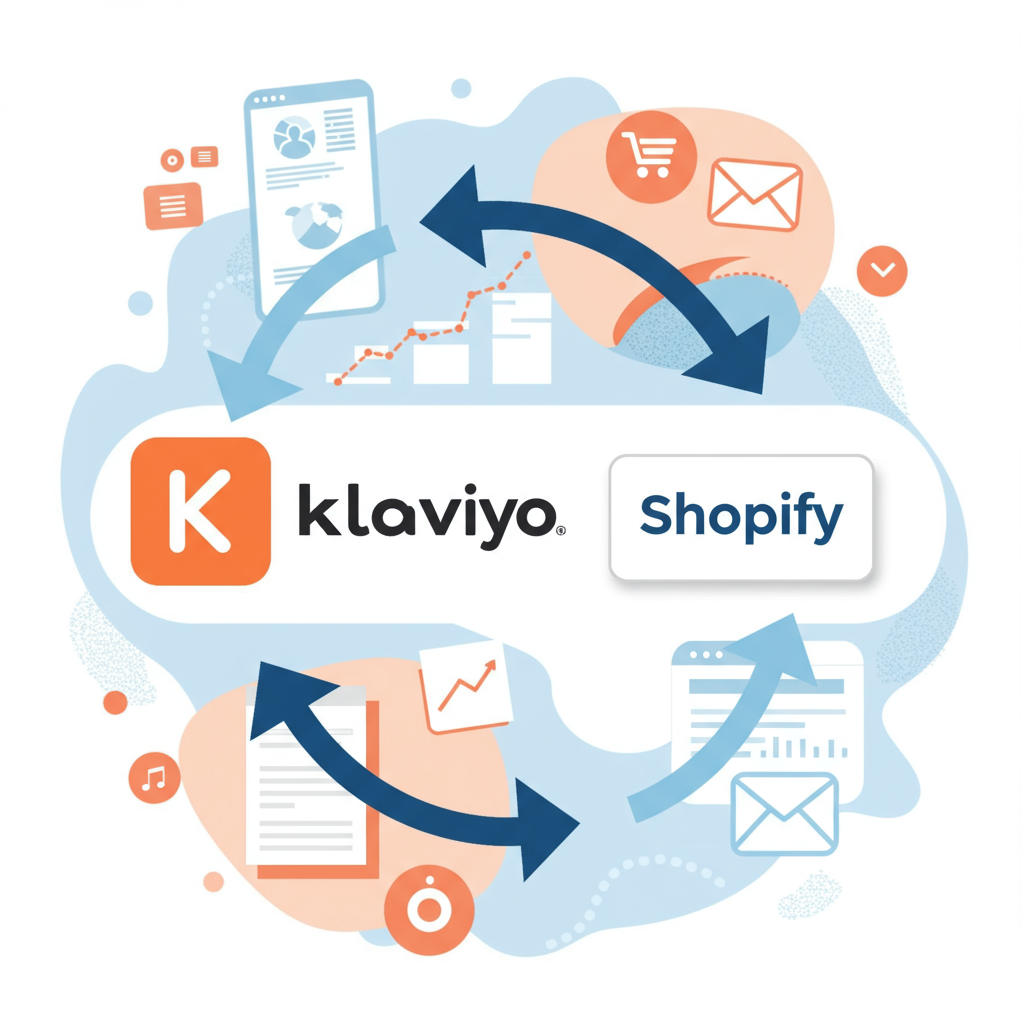Unlock unparalleled customer engagement and revenue growth by seamlessly connecting your Shopify store with Klaviyo’s powerful marketing automation.
As an e-commerce merchant, I’m constantly looking for ways to optimize my store’s performance and build stronger relationships with my customers. One of the most impactful strategies I’ve implemented involves integrating two powerhouse platforms: Shopify and Klaviyo.
Today, I want to share my insights and a comprehensive guide on how you can effectively use Klaviyo with your Shopify store to supercharge your marketing efforts.
First, let’s briefly touch upon what each platform brings to the table. Shopify, as you likely know, is my go-to e-commerce platform for building and managing online stores. It handles everything from product listings to secure checkouts.
Klaviyo, on the other hand, is a leading email and SMS marketing automation platform specifically designed for e-commerce businesses. It’s not just about sending emails; it’s about sending the *right* emails to the *right* people at the *right* time.
The magic truly happens when these two platforms work in harmony. By connecting Shopify and Klaviyo, I gain a unified view of my customer data, allowing for highly personalized and automated marketing campaigns.
This integration allows Klaviyo to pull crucial data directly from my Shopify store. This includes customer purchase history, browsing behavior, abandoned carts, product views, and much more.
With this rich data, I can segment my audience with incredible precision. Instead of sending generic newsletters, I can tailor messages based on past purchases, loyalty, or even how recently someone visited my site.
The primary benefit I’ve observed is a significant increase in customer engagement and, consequently, revenue. Personalized communication simply resonates more with customers.
So, how do I go about setting up this powerful integration? The process is surprisingly straightforward, and I’ll walk you through the key steps I followed.
My first step was to ensure I had active accounts for both Shopify and Klaviyo. If you don’t have a Klaviyo account yet, you can easily sign up for a free tier that allows you to get started.
Once logged into Klaviyo, I navigated to the ‘Integrations’ tab, which is usually found in the left-hand sidebar or under the ‘Account’ dropdown.
From there, I searched for ‘Shopify’ and clicked on the integration option. Klaviyo provides clear instructions, but essentially, it involves connecting your Shopify store.
This connection typically requires me to either log into my Shopify account directly through Klaviyo’s interface or to copy and paste API keys, depending on the specific setup flow at the time.
Klaviyo will then ask for permission to access various data points from your Shopify store. It’s crucial to grant these permissions so Klaviyo can pull all the necessary customer and order data.
After granting permissions, Klaviyo begins its initial sync. This process can take some time, especially if you have a large customer base and extensive order history. I usually let it run in the background.
Once the sync is complete, I can see my Shopify data populating within Klaviyo. This is where the real fun begins, as I can now start leveraging Klaviyo’s features.
One of the first things I always set up are automated flows. These are pre-designed sequences of emails (or SMS) triggered by specific customer actions or events.
The abandoned cart flow is an absolute must-have. Klaviyo automatically detects when a customer leaves items in their cart without completing a purchase and sends a series of reminders. This alone has recovered significant revenue for me.
Another essential flow is the welcome series. When a new customer signs up for my email list or makes their first purchase, they receive a warm welcome, introducing them to my brand and perhaps offering a small discount.
I also utilize browse abandonment flows. If a customer views a specific product multiple times but doesn’t add it to their cart, Klaviyo can send a gentle reminder about that product.
Post-purchase flows are incredibly valuable for building loyalty. I use them to send order confirmations, shipping updates, product review requests, and even recommendations for related products.
Segmentation is another powerful tool I rely on heavily. I create segments based on purchase frequency, total spend, products purchased, or even customers who haven’t purchased in a while (for win-back campaigns).
This allows me to send highly targeted campaigns. For instance, I can send a special offer only to customers who have purchased a specific product category in the past six months.
Beyond automated flows, I use Klaviyo for my regular email campaigns, such as new product announcements, seasonal sales, and holiday promotions. The drag-and-drop email builder makes design easy.
I also integrate Klaviyo forms on my Shopify store. These pop-ups or embedded forms help me capture new email subscribers directly on my website, feeding them straight into my Klaviyo lists.
Finally, I constantly monitor my Klaviyo analytics. The dashboard provides detailed insights into open rates, click-through rates, conversion rates, and the revenue generated by each flow and campaign.
This data helps me refine my strategies, A/B test different subject lines or email content, and continuously improve my marketing performance.
My advice to you is to start simple. Implement the core flows first, like abandoned cart and welcome series, and then gradually expand your automation and segmentation efforts.
The integration of Klaviyo with Shopify has truly transformed how I approach e-commerce marketing. It’s moved me from generic blasts to highly personalized, data-driven communication that fosters customer loyalty and drives sales.
What do you think about this article? I’d love to hear your thoughts on how you’re using Klaviyo or if this guide has inspired you to start!






